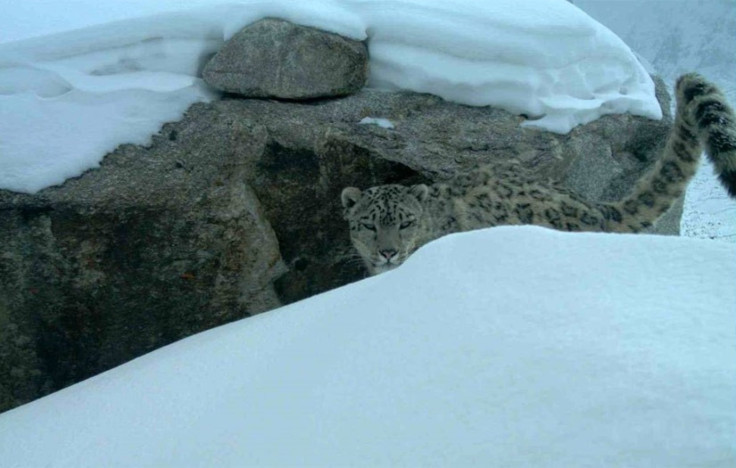Elusive Snow Leopard Population Caught on Camera in Afghanistan

The Snow Leopard is one of the most elusive animals in the world. So, when scientists caught rare footage of the cats on camera traps stationed high in Afghanistan's remote northeast mountains, they were noticeably thrilled.
This is a wonderful discovery; it shows that there is real hope for snow leopards in Afghanistan, said deputy director for Asia Programs at the Wildlife Conservation Society Peter Zahler, in a statement.
The population of endangered snow leopards is apparently thriving in the region. These big cats live among the dramatic peaks of the desolate Wakhan Corridor, a narrow stretch of land 220 miles long that is sandwiched between Tajikistan to the north, Pakistan to the south, and China to the east.
This is the first time that this type of technology has been used in Afghanistan to document the rare animals. Camera traps captured shots of the spotted cats at 16 locations across the region.
Though the snow leopards once roamed much of Central Asia's mountainous region, the species has suffered declines approaching 20 percent in the last two decades. Estimates from the Wildlife Conservation Society, put the population at a mere 4,500 to 7,500 snow leopards left in the wild.
The find in Afghanistan was first published in the June 29 issue of the Journal of Environmental Studies. The Wildlife Conservation Society study examined the plight of snow leopards in Afghanistan as the species is threatened by poaching, an illegal pet trade, and run-ins with angry shepherds who must deal with deaths in their flock. The sleek, fuzzy-tailed leopards are also captured to meet an increasing demand for their penises and bones in China, where some believe they enhance sexual performance.
Our goal is to ensure that these magnificent animals have a secure future as part of Afghanistan's natural heritage, Zahler of Wildlife Conservation Society said in a statement. The New York-based group has worked in the region since 2006, protecting a myriad of wildlife including the Marco Polo sheep and the ibex.
The society works with the U.S. government's aid arm USAID and is providing conservation education in the Wakhan Corridor, training 59 rangers to monitor wildlife, constructing predator-prof livestock corrals, and instituting an insurance scheme to compensate shepherds for livestock losses from predators like the snow leopard.
© Copyright IBTimes 2024. All rights reserved.












